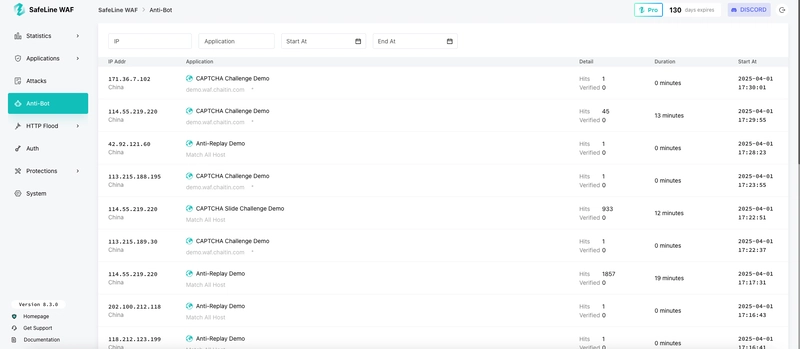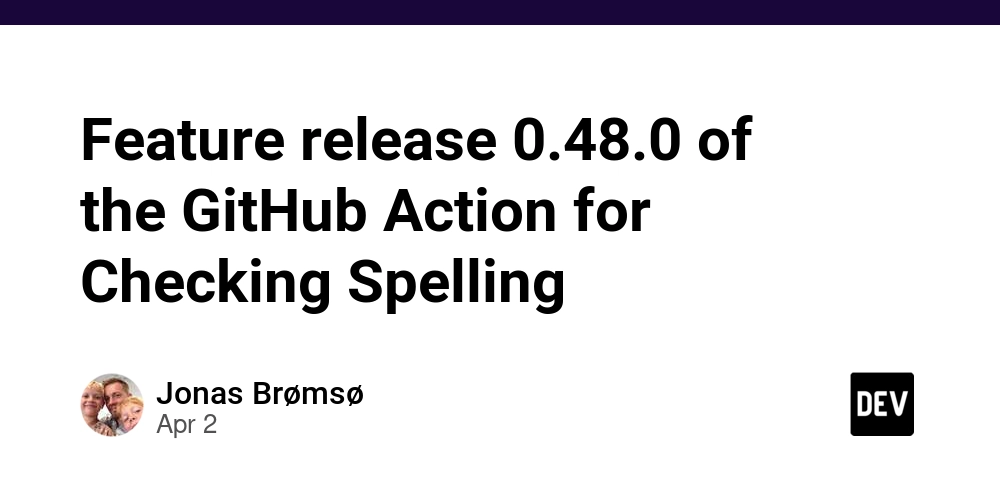How to Defend Against Bot Attacks with SafeLine WAF
Introduction Bot attacks are a persistent threat to web applications, ranging from credential stuffing and web scraping to DDoS and API abuse. SafeLine WAF provides robust defense mechanisms to identify, mitigate, and block malicious bot traffic while ensuring legitimate users can access your services without disruption. Common Types of Bot Attacks Before implementing defenses, it's crucial to understand the types of bot attacks: Credential Stuffing: Attackers use stolen credentials to attempt logins across multiple sites. Web Scraping: Automated bots extract data from web pages, often violating terms of service. DDoS Attacks: Large-scale botnets generate excessive traffic to overwhelm web services. API Abuse: Malicious bots exploit APIs for fraud, fake account creation, or unauthorized data access. Carding Attacks: Bots test stolen credit card details on e-commerce platforms. How SafeLine WAF Defends Against Bot Attacks 1. Behavioral Analysis & Anomaly Detection SafeLine WAF leverages behavioral analytics to identify unusual patterns in traffic. It detects deviations from normal user interactions, such as rapid login attempts or repetitive API calls, helping to flag and block suspicious bot activity. 2. Rate Limiting & Challenge Mechanisms SafeLine WAF allows administrators to configure rate limits on sensitive endpoints, restricting excessive requests from the same IP or device. Additionally, challenge-response mechanisms such as CAPTCHA or JavaScript validation can be enforced to filter out automated bot traffic. 3. IP Reputation & Threat Intelligence SafeLine WAF integrates with global threat intelligence databases to block known malicious IPs and botnets proactively. Real-time updates ensure that emerging threats are mitigated before they can cause harm. 4. User-Agent & Header Analysis Malicious bots often use forged or inconsistent user-agent strings. SafeLine WAF inspects HTTP headers for anomalies, identifying and blocking requests that exhibit bot-like characteristics. 5. Machine Learning-Based Bot Mitigation Through continuous learning, SafeLine WAF refines its ability to distinguish between legitimate users and sophisticated bots that attempt to mimic human behavior. This enhances detection accuracy and reduces false positives. 6. API Security Enforcement For applications with APIs, SafeLine WAF provides security policies such as token validation, request integrity checks, and authentication enforcement, preventing automated abuse and API scraping. Best Practices for Strengthening Bot Protection with SafeLine WAF Enable and fine-tune bot detection settings: Adjust sensitivity levels based on traffic behavior. Monitor and analyze traffic logs: Regularly review SafeLine WAF logs to identify emerging bot patterns. Deploy multi-layered authentication: Use MFA and IP whitelisting to protect critical endpoints. Leverage SafeLine WAF’s real-time monitoring tools: Utilize dashboards and alerts to respond to threats proactively. Conclusion Bot attacks continue to evolve, posing significant risks to businesses. SafeLine WAF provides a comprehensive and adaptable defense against malicious bots, combining behavioral analysis, rate limiting, reputation-based filtering, and machine learning-driven protection. By implementing SafeLine WAF’s bot mitigation strategies, organizations can safeguard their applications, APIs, and sensitive data from automated threats effectively. For more information on SafeLine WAF and its features, visit SafePoint.

Introduction
Bot attacks are a persistent threat to web applications, ranging from credential stuffing and web scraping to DDoS and API abuse. SafeLine WAF provides robust defense mechanisms to identify, mitigate, and block malicious bot traffic while ensuring legitimate users can access your services without disruption.
Common Types of Bot Attacks
Before implementing defenses, it's crucial to understand the types of bot attacks:
- Credential Stuffing: Attackers use stolen credentials to attempt logins across multiple sites.
- Web Scraping: Automated bots extract data from web pages, often violating terms of service.
- DDoS Attacks: Large-scale botnets generate excessive traffic to overwhelm web services.
- API Abuse: Malicious bots exploit APIs for fraud, fake account creation, or unauthorized data access.
- Carding Attacks: Bots test stolen credit card details on e-commerce platforms.
How SafeLine WAF Defends Against Bot Attacks
1. Behavioral Analysis & Anomaly Detection
SafeLine WAF leverages behavioral analytics to identify unusual patterns in traffic. It detects deviations from normal user interactions, such as rapid login attempts or repetitive API calls, helping to flag and block suspicious bot activity.
2. Rate Limiting & Challenge Mechanisms
SafeLine WAF allows administrators to configure rate limits on sensitive endpoints, restricting excessive requests from the same IP or device. Additionally, challenge-response mechanisms such as CAPTCHA or JavaScript validation can be enforced to filter out automated bot traffic.
3. IP Reputation & Threat Intelligence
SafeLine WAF integrates with global threat intelligence databases to block known malicious IPs and botnets proactively. Real-time updates ensure that emerging threats are mitigated before they can cause harm.
4. User-Agent & Header Analysis
Malicious bots often use forged or inconsistent user-agent strings. SafeLine WAF inspects HTTP headers for anomalies, identifying and blocking requests that exhibit bot-like characteristics.
5. Machine Learning-Based Bot Mitigation
Through continuous learning, SafeLine WAF refines its ability to distinguish between legitimate users and sophisticated bots that attempt to mimic human behavior. This enhances detection accuracy and reduces false positives.
6. API Security Enforcement
For applications with APIs, SafeLine WAF provides security policies such as token validation, request integrity checks, and authentication enforcement, preventing automated abuse and API scraping.
Best Practices for Strengthening Bot Protection with SafeLine WAF
- Enable and fine-tune bot detection settings: Adjust sensitivity levels based on traffic behavior.
- Monitor and analyze traffic logs: Regularly review SafeLine WAF logs to identify emerging bot patterns.
- Deploy multi-layered authentication: Use MFA and IP whitelisting to protect critical endpoints.
- Leverage SafeLine WAF’s real-time monitoring tools: Utilize dashboards and alerts to respond to threats proactively.
Conclusion
Bot attacks continue to evolve, posing significant risks to businesses. SafeLine WAF provides a comprehensive and adaptable defense against malicious bots, combining behavioral analysis, rate limiting, reputation-based filtering, and machine learning-driven protection. By implementing SafeLine WAF’s bot mitigation strategies, organizations can safeguard their applications, APIs, and sensitive data from automated threats effectively.
For more information on SafeLine WAF and its features, visit SafePoint.









































































